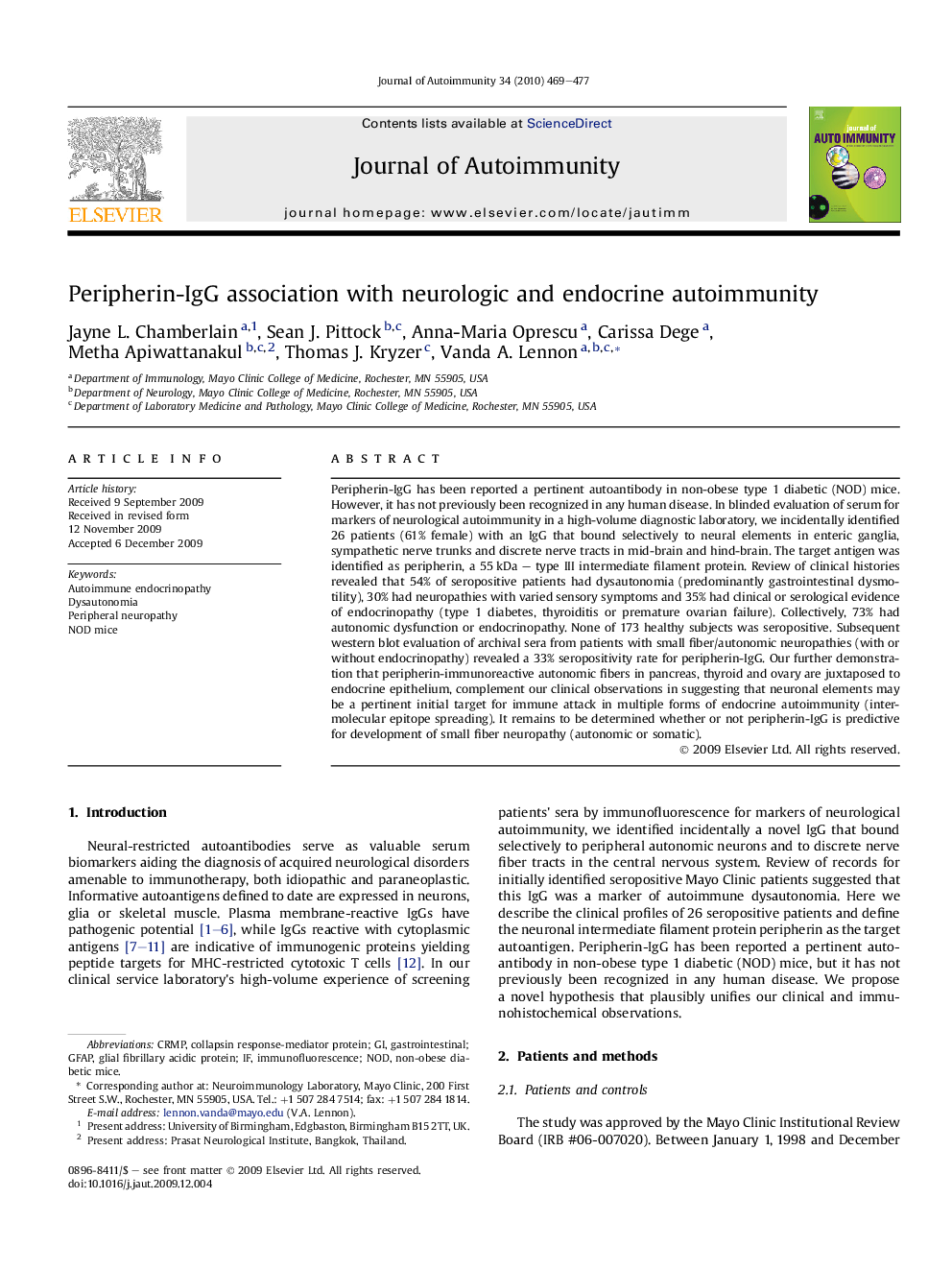| Article ID | Journal | Published Year | Pages | File Type |
|---|---|---|---|---|
| 3368313 | Journal of Autoimmunity | 2010 | 9 Pages |
Peripherin-IgG has been reported a pertinent autoantibody in non-obese type 1 diabetic (NOD) mice. However, it has not previously been recognized in any human disease. In blinded evaluation of serum for markers of neurological autoimmunity in a high-volume diagnostic laboratory, we incidentally identified 26 patients (61% female) with an IgG that bound selectively to neural elements in enteric ganglia, sympathetic nerve trunks and discrete nerve tracts in mid-brain and hind-brain. The target antigen was identified as peripherin, a 55 kDa – type III intermediate filament protein. Review of clinical histories revealed that 54% of seropositive patients had dysautonomia (predominantly gastrointestinal dysmotility), 30% had neuropathies with varied sensory symptoms and 35% had clinical or serological evidence of endocrinopathy (type 1 diabetes, thyroiditis or premature ovarian failure). Collectively, 73% had autonomic dysfunction or endocrinopathy. None of 173 healthy subjects was seropositive. Subsequent western blot evaluation of archival sera from patients with small fiber/autonomic neuropathies (with or without endocrinopathy) revealed a 33% seropositivity rate for peripherin-IgG. Our further demonstration that peripherin-immunoreactive autonomic fibers in pancreas, thyroid and ovary are juxtaposed to endocrine epithelium, complement our clinical observations in suggesting that neuronal elements may be a pertinent initial target for immune attack in multiple forms of endocrine autoimmunity (intermolecular epitope spreading). It remains to be determined whether or not peripherin-IgG is predictive for development of small fiber neuropathy (autonomic or somatic).
